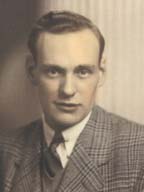“Fairvale as I Remember It” by Newman Greer

Newman Greer
I started spending a week of my school vacation with my Grandmother in Fair Vale about 1930. Her maiden name was Gertrude Vincent and her first husband, my Grandfather, was Isaac Marr. She lived on the Vincent Road – the fifth house on the right going from the Gondola Point Road. This was as far as the Vincent Road was passable with an automobile – there was just a wagon track from there on through. Edgar Vincent lived in the first house on the right where he kept a store. I remember climbing the wide steps up to the front door to buy penny candy. When the door opened, it jarred a sleigh bell, signaling that they had a customer. The next two houses on the right were summer places: McLennan owned one and Ferris the other. Henry and Belle Burger owned the fourth house.
Frank Burger owned the first house on the left. He used to tease me about being from Quacko. (“Quaco” has become the present St. Martins.) There were a couple more houses on the left. Clair and Bessie Vincent lived in one. The first house on the left, going towards Saint John on the Gondola Point Road, was the summer cottage of Walter and Margaret Vincent. The next one was an old Vincent farmhouse. Bill McKinley had lived there, but Mr. And Mrs. Gale occupied it, as I remember it. My aunt, who lived there when she was a young girl, declares this is a haunted house. A bit further down on the right is the old farm house in which Mrs. Henderson and her daughters Bessie and Edna lived. In the next house on the right was her son Fred Henderson. The Dobbin families were early residents of the area.
Going toward Gondola Point from the Vincent Road, the two houses on the left, were those of Chester Vincent and Frank Vincent. One of them had the most delicious patch of cultivated blackberries that I have ever seen. The next house on the right was that of Rene Green. Rene never married. I’ve been told that at one time she had a beau that she thought a lot of, but while out for a horse and buggy ride one day something happened and she nearly scratched his eyes out. That was the end of the relationship.
There were two Post Offices: one named “Fair Vale” (two words) and, the other, “Fairvale Station.” The National Archives of Canada records the Fair Vale Office opening in 1908 with Margaret A. Catheline as Postmistress and closing in 1946. The Fairvale Station Office opened in 1925 with Postmaster W. L. McElwain and closed in 1983.
Opposite the Shipyard Road were the home of Maggie Catheline and the Fair Vale Post Office. Next was the Hillhurst dairy farm, operated by the Roberts’ family, which is now the Hillhurst subdivision. But this is across the line into Gondola Point. The large house at the top of the Shipyard Road was the Carter House. He was a Member of Parliament. When the road was first paved up from Rothesay, it stopped at the Shipyard Road. I have been told that the original road went out through where Jones Avenue is now. My ancestors, the Marrs and the Vincents must have owned most of Fairvale at one time. Two roads still bear their names.
The railway overpass was a narrow structure built of quarried stone similar to the one at Model Farm. The road ran almost parallel to the tracks. Cars had to make a sharp left turn going into the underpass and a sharp right turn coming out. According to my aunt, this area was formerly called “Armstrongs Crossing” – the Armstrong House being about where the flagpole in the little park is now. In 1909, the station house was built level with the tracks, just to the left of the underpass on the north side. It had wooden steps leading up to it. The Stack Road used to come out right close to the underpass. On the corner of the Gondola Point Road and River Road were McElwain’s store and the Fairvale Station Post Office.
On Christmas morning in 1932, my step Grandfather, John Wright, died suddenly from a heart attack. My mother, sister, and I stayed with Grandma that winter and I went to the Rothesay Consolidated School. We traveled to and from school on a sled hauled by a team of horses driven by Robert Marr. A few families still lived on Long Island. Mort Breen would bring his daughter Ardis across the ice on the Kennebecasis River to school at Rothesay.
I remember when the section of Frances Avenue from the Shipyard Road to the Gondola Point Road was first cleared of trees. Bushes grew back in before anything further was done. At this time, Frances Avenue was surveyed 50 feet wide down the center of the land owned by Mrs. Gale on one side and her sister Mrs. Turnbull of Montreal on the other. The lots were also surveyed at this time. Later, when it was to become a government road, it was necessary that the width be 66 feet. This presented a problem because lots had been sold off on both sides at the Shipyard Road end and Dwight Magee had built a house almost larger than his lot at the Gondola Point Road end. This was resolved by obtaining the necessary land from the lot now owned by Ernie Clark at the lower end and using land on the opposite side at the upper end. This effectively changed the direction as well as widened the road and, of course, took land from the original survey of lots. This was not very well documented in the Land registration Office and I think it is misunderstood today by some land owners and surveyors. Frances Avenue is often misspelled with an “I” instead of an “E”. It was named after Frances Heaney, the daughter of the owner of the subdivision. I don’t remember anything about the Titus Shipyard at the end of the Shipyard Road as it was long before my time.
A few Indians still lived in the area. One in particular named “Laughing Louis” was an unforgettable character. Although he traveled extensively on foot, a great deal of his time was spent in Fairvale. He usually lived in a small hut in the woods that he would build from whatever he could gather up in the neighborhood. He got his name from his hearty laugh – once he started, he couldn’t be stopped. Sometimes he made a few axe handles to sell or trade and, occasionally, a bow and arrow for the youngsters. Louis never worried about where his next meal would come from, because he was a likeable character and could stop at almost any house in Fairvale and be taken in for a meal. Louis must have gone to Heaven, because he was never interested in worldly wealth.











